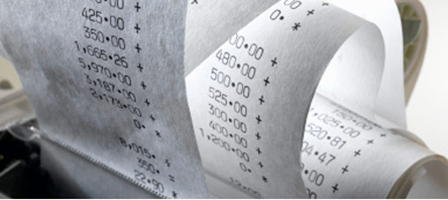Great News! Child Care Tax Credit Expanded for 2021
- Learn how the American Rescue Plan Act increased the child and dependent care tax credit.
- Learn about the refundability of the credit.
- Discover the maximum expense limit for child care.
- Find out how much the credit percentage increased for 2021.
- Learn more about the new maximum credit.
- Find out how the credit phases out for higher-income taxpayers.
- Learn how the ARPA affects employer-provided dependent care assistance.
Great news if you are paying childcare expenses that enable you to work! As part of President Biden’s American Rescue Plan Act (ARPA) signed into law on March 11, 2021, the child and dependent care tax credit has been substantially increased. Fiducial has the details below!
The credit increases and other provisions of the ARPA that apply to this credit only apply to 2021. The increase in the credit is part of the government’s effort to ease families’ financial burdens during the pandemic.
Is the child care tax credit refundable or nonrefundable?
A tax credit can be either nonrefundable or refundable. Nonrefundable credits can only offset a taxpayer’s tax liability, at most bringing it down to zero, while a refundable credit offsets the tax liability and any credit amount in excess of the liability is refunded to the taxpayer. Generally, the childcare credit is nonrefundable. However, for 2021, it is fully refundable if the taxpayer’s primary residence (or at least one spouse on a joint return) is in the U.S. for more than half the year.
Calculating the child care tax credit amount
The credit is based upon a percentage of the taxpayer’s care expenses for a child under the age of 13 (the expenses count up to the date the child actually turns 13) that allow a taxpayer to work. In the case of a married couple, the credit only applies if both parents have employment. Special provisions exist for disabled spouses or students not covered in this article.
Expenses used to figure the credit for 2021 have a maximum limit:
- $8,000 for one child, up from the normal $3,000 in any other year.
- $16,000 for two or more children, up from the normal $6,000 in any other year.
In addition, the percentage used to calculate the credit for most taxpayers has increased to 50%. In any other year, that percentage would vary depending upon the taxpayer’s adjusted gross income (AGI), with lower-income taxpayers benefiting from the highest percentage rate (35%) and the lowest percentage rate (20%) for higher-income taxpayers.
A combination of the higher maximum expenses and the 50% rate results in a significant increase in the maximum credit:
- $4,000 for one child (50% of expenses up to $8,000)
- $8,000 for the care of 2 or more children (50% of expenses up to $16,000)

Child tax credit phase out
This increase in the credit targets lower-income taxpayers, so it includes a phaseout provision for higher-income taxpayers. The 50% credit rate begins to phase out when the taxpayer’s AGI reaches $125,000 (1 percentage point for each $2,000 above the $125,000 threshold), but the rate isn’t reduced below 20% until the AGI reaches $400,000, at which point the credit phaseout picks up again.
In addition, since the purpose of the credit is to help lower-income workers’ childcare expenses, the expenses used to calculate the credit are limited to the taxpayer’s income from working. In the case of a married couple, the expenses are limited to the working income of the lowest-earning spouse.
This all may seem a bit complicated, so here is a typical example:
Example:
A married couple has 2 children under the age of age 13 and both work. One spouse makes $25,000 and the other makes $18,000. They have no other income, so their AGI is $43,000 ($25,000 + $18,000)—under the AGI phaseout threshold of $125,000. During the year, they incurred $14,000 in childcare expenses for their 2 children. The maximum expenses allowed equal $18,000, but in this example, we are limited to the $18,000 of expenses or the working income of the lowest-earning spouse, which is $14,000. Thus, we must use $14,000 as the expense amount. Child care for this couple costs $7,000 ($14,000 x 50%).
For those who enjoy employer-provided dependent care assistance, the ARPA also changes (for 2021 only) the exclusion for employer-provided assistance for dependent care, increasing the maximum amount of excludable earnings from $5,000 to $10,500 for a married couple filing jointly ($5,250 for married filing separate).
Have questions about how this one-year change might affect your tax situation? Call Fiducial at 1-866-FIDUCIAL or make an appointment at one of our office locations to discuss your situation.
Ready to book an appointment now? Click here. Know someone who might need our services? We love referrals!
For more small business COVID-19 resources, visit Fiducial’s Coronavirus Update Center to find information on SBA loans, tax updates, the Paycheck Protection Program, paid sick and family leave, and more.








